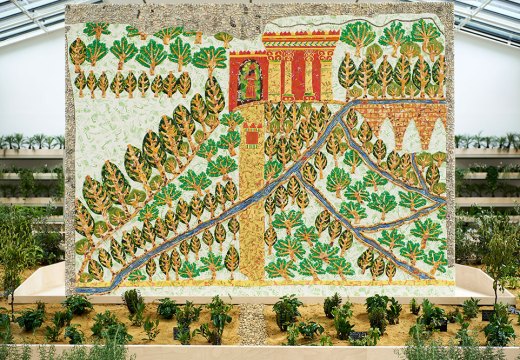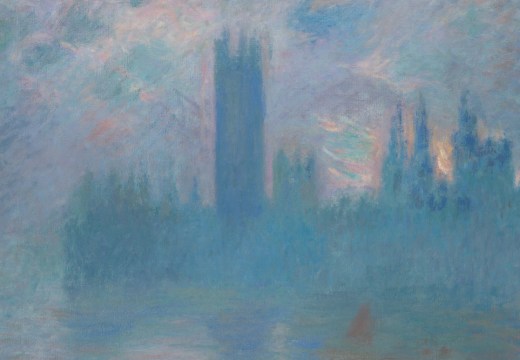Evelyn De Morgan made a highly original and important contribution to the late development of the Pre-Raphaelite movement and its merging with Symbolism. Her often brilliantly coloured figurative works focused on the female form, especially in allegorical, mythical and spiritual contexts. Although a number of De Morgan’s paintings are well known, her drawings will be less familiar to many and her exquisite gold drawings, which are now the focus of a small but beautifully crafted exhibition at Leighton House in London, will come as a revelation. Only 17 works of this type are known; 14 are on show.
Born in London in 1855 to a wealthy family with artistic connections, De Morgan was exceptionally well educated at home – she studied Greek, Latin and modern languages, as well as literature, mythology, history and science. A radical figure in many respects, she later became a spiritualist, a supporter of the suffrage movement and a pacifist. De Morgan’s formal artistic training started in 1872 at the South Kensington National Art Training School (today the Royal College of Art) and continued at the Slade School of Art. She soon moved to independent practice, exhibiting with success at the Grosvenor Gallery. Visits to Florence from 1875 onwards enabled her to study the art of the quattrocento closely and most especially the work of Botticelli, which had a profound impact on her painted work. In 1883 she met the ceramicist William De Morgan, whom she married in 1887. Their creative life together was divided between London and Tuscany. She died in 1919, two years after William.

The Valley of Shadows (1899), Evelyn De Morgan. Photo: © RBKC/Jaron James
Drawing formed the preparatory basis of many of De Morgan’s mature paintings, but the compositions shown at Leighton House were for the most part intended to stand alone as independent works of art. Edward Burne-Jones is cited as a key contemporary source of inspiration for them in terms of both the techniques employed and aesthetic effects achieved – he had used gold on paper with other media in the 1880s. But this must have been enriched by De Morgan’s knowledge of Italian Renaissance art, including the gilded bronze doors by Lorenzo Ghiberti on the Florence Baptistery, and perhaps illuminated manuscripts.
The drawings are of considerable technical interest. The artist acquired so-called ‘cakes of gold’ – dry pellets of pigment – from the artist’s supplier Charles Roberson, who served many distinguished painters, especially in the later 19th century. De Morgan then ground these pellets to create both gold paint and crayons, made to her own recipes. Both were used on dark grey paper – which proved to be the ideal foil for their intense, light-catching qualities. The paper has been identified in two instances as coming from the renowned French manufacturer Canson & Montgolfier. The great care De Morgan expended on these works reflected not only a fascination with a process at which she excelled, but also a belief that gold had a wider cultural, even spiritual dimension; she knew that the Swiss Renaissance alchemist and philosopher Paracelsus considered gold to be the colour of salvation.
The prospect of salvation is celebrated splendidly in Gloria in Excelsis (1893), in which angels announce the birth of Christ through music and song. This is among the most ornate of the gold drawings and illustrates brilliantly how a rich variety of surface effects could be achieved with the medium. The cherubim and seraphim in the heavenly realm above the two central figures may recall details of Francesco Botticini’s The Assumption of the Virgin (c. 1475–76), which was acquired by the National Gallery in London in 1882.
The subjects selected by De Morgan range widely beyond Christian imagery and encompass mythological compositions, such as Hero Holding the Beacon for Leander (1884), which shows the Greek priestess Hero holding up her lamp to steer her lover Leander across the Hellespont; De Morgan gave this work to a friend as a wedding gift. The most ambitious compositions address allegorical themes, as in the powerful Victoria Dolorosa (1900), in which a knight is solemnly crowned; it signifies a sorrowful victory, as battles have been won but at a terrible cost.

Victoria Dolorosa (1900), Evelyn De Morgan. Leighton House, London
It would be hard to find a more appropriate setting for the exhibition than Leighton House, as William De Morgan was commissioned by Lord Leighton to create tiles for its famous Arab Hall and Narcissus Hall. Evelyn was also one of the first artists to exhibit her work here, in 1902, following the transformation of the house into a public museum. She earlier displayed a selection of her magical gold drawings at the Fine Art Society in 1889; however, this is the first time there has been a celebration of these beguiling works since then – it is an opportunity not to be missed.

Gloria in Excelsis (1893), Evelyn De Morgan. Photo: Trustees of the De Morgan Foundation
‘Evelyn De Morgan: The Gold Drawings’ is in the Tavolozza Drawings Gallery at Leighton House, London, until 1 October.
Unlimited access from just $16 every 3 months
Subscribe to get unlimited and exclusive access to the top art stories, interviews and exhibition reviews.














![Masterpiece [Re]discovery 2022. Photo: Ben Fisher Photography, courtesy of Masterpiece London](http://www.apollo-magazine.com/wp-content/uploads/2022/07/MPL2022_4263.jpg)
Has arts punditry become a perk for politicos?